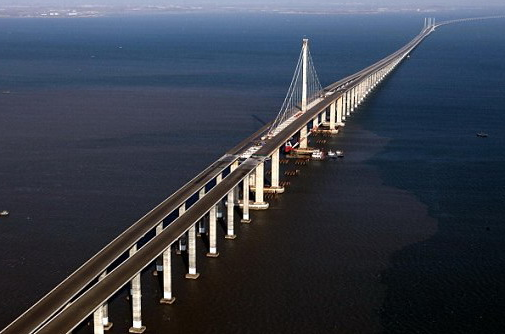The first use of bridges can be traced back to ancient times in Mesopotamia, where, unlike modern bridges, they were built with rocks, fallen trees, and dirt.
However, it was discovered that grinding up volcanic rocks could produce an excellent mortar material, and this led ancient Roman engineers to make a revolution in bridge building at some point in history.
By using this invention, they were able to create constructions that were stronger, more potent, and greater than those of any civilization before them.
Roman engineers quickly extended across Europe, Africa, and Asia, building high-quality bridges and roads after realizing the importance of roadways and their ability to connect people to far-off places.
Their innovation has continued to be used all over the world with even stronger materials.
Depending on the use, modern bridges are usually built by expertly combining cables, concrete, and irons.
Additionally, the size of these bridges varies, and they can be constructed in various lengths that cross entire mountains, rocky terrain, lakes, and seas. Now, you’re probably wondering what the longest bridges in the world are. Keep reading to find out.
Although bridges were initially built for the primary purpose of getting from one side of an obstruction to the other, over the millennia since their invention, people have started to be innovative with the construction of bridges.
Experts in the industry have also found a way to combine beauty and functionality.
Many of the largest bridges in the world count as viaducts, with many of them in Asia. Along with serving as a solution for high-speed rail travel, they also preserve valuable land and are resilient to floods, which is a typical occurrence in river valleys.
4. Tianjin Grand Bridge – 113,700 meters
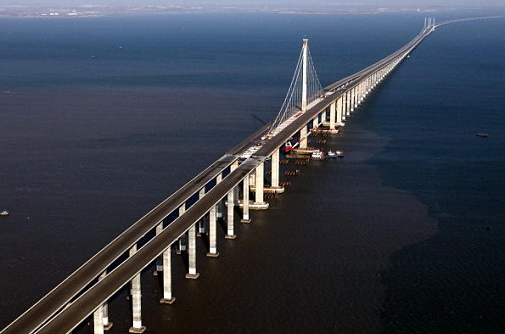
With an estimated length of around 373,000 feet (113,700 meters), the Tianjin Grand Bridge is the fourth longest in the world.
With a length of 113,700 meters, this bridge was completed in 2010.
It is another section of the Beijing-Shanghai High-Speed Railway that links Langfang and Quingxian.
Located in China, the construction of the bridge was completed after four years of work in 2010, but it was not inaugurated until the following year.
The bridge is also a viaduct with 32 different parts that transport high-speed trains over densely populated areas, which were each built and erected independently. It consists of numerous 100-foot-long, 860-tonne box girders.
A specialized crane was used to bring the girders to the installation site, set them on piers, and then transport them back to the two production sites along the bridge’s course.
In other words, these girders were manufactured elsewhere, not too far from the construction site, and then they were transported to the site when the constructors needed them.
Also, in order to reduce the amount of land needed for the railway and to speed up construction, this bridge was constructed with an elevated track.
3. Cangde Grand Bridge – 115,900 meters
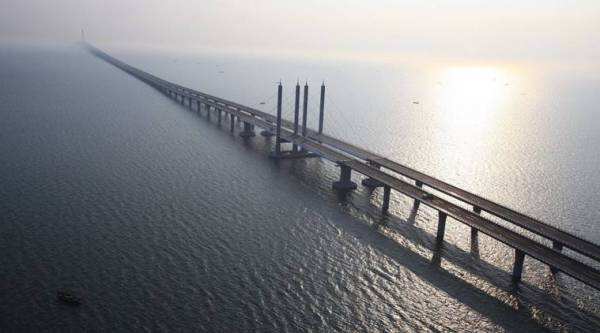
Located in Beijing, China, this bridge was completed over a decade ago, in 2010, and is an integral part of the Beijing–Shanghai High-Speed Railway.
It is the third longest bridge on the railway. The bridge stretches over 105 kilometers (65 miles), and has been designed to resist most natural disasters, even earthquake tremors, and has over 3,000 piers that support its incredible length.
With the help of the railway line’s network of bridges, it takes just 30 minutes to travel the three hours between Hong Kong, Macau, and mainland China.
2. Changhua–Kaohsiung (Viaduct) Bridge – 157,317 meters
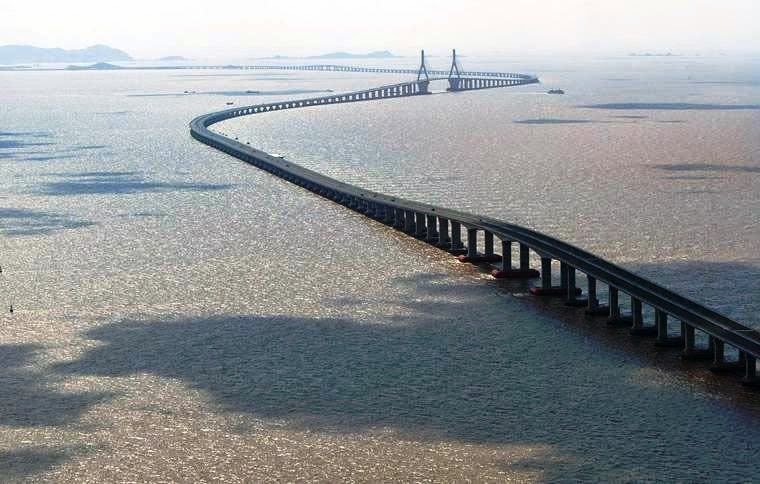
A viaduct is a particular kind of bridge that consists of a number of piers, arches, or columns supporting a length of elevated railway or road. Connecting points of land with nearly the same elevation usually involves viaducts.
They can be used to cross land or water, giving a way to link up two different parts of a city or to construct a lengthy railroad over wetlands.
The Changhua–Kaohsiung bridge has an impressive length of 157,317 meters (516,132 feet).
This bridge, completed in 2007, was constructed under tight anti-seismic guidelines. In other words, just like the Cangde Grand bridge, the Changhua–Kaohsiung viaduct was designed to withstand earthquakes.
Also, it was built to help trains stop during earthquake events in a secure manner, considering that the area of construction is close to the meeting point of two tectonic plates and, as such, prone to seismic shocks.
The structure of the viaduct limits damage to specific areas so that it may be readily rebuilt following an earthquake.
1. The Danyang-Kunshan Grand Bridge, China – 164,800 meters
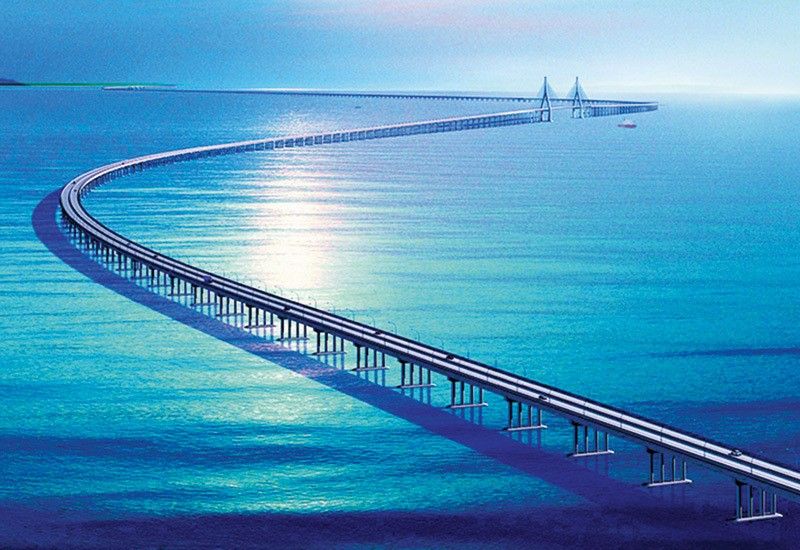
As the longest bridge in the entire world, the Danyang-Kunshan Grand Bridge in the Jiangsu province of China reaches a length of 164,800 meters (540,700 feet). Belonging to the Beijing-Shanghai High-Speed Railway, the construction of this bridge was completed in 2010, but it was not opened until the following year.
The bridge was constructed in four years; between 2006 and 2010, with an estimate of around 10,000 workers and a cost of between 8.5 and 10 billion dollars.
The Danyang-Kunshan Grand Bridge spans a portion of the Yangtze River Delta at a height of around 100 feet, with only a small portion of the bridge actually reaching Yangcheng Lake in Suzhou.
This bridge’s length forces it to cross through five cities: Danyang, Changzhou, Wuxi, Suzhou, and Kunshan. The bridge is surrounded by lowland rice paddies, rivers, canals, and lakes.
The construction of the bridge in this area has helped improve the transportation options the residents have. It was developed and constructed by the China Road and Bridge Corporation (CRBC), a division of China Communications Construction Company.
Source: AZA



